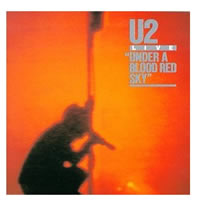January 29, 2007
Although a small label had unsuccessfully released some singles in 1963, most American rock and roll fans were introduced to a new band from England via Capitol Records’ 1964 album, “
Meet the Beatles.â€
That album, and the subsequent visits by the mop-topped Liverpudlians to the U.S., sparked by appearances on TV including historic performances on the “Ed Sullivan Show,†re-set an entire generation’s emotional gyroscope. Beatlemania brought with it a different kind of music, pop that popped with surging harmonies and was driven by hard, clangy rhythms, shot through with the soul and R&B of rock’s roots but also energized with a new kind of electricity.
The Beatles were the prototype for power pop, a genre that generations of bands, fans and rock critics have been seduced by ever since “Meet the Beatles.â€
The list of power-pop artists that have been critically heralded is long even though few have hit the charts and become rich and famous: the Byrds (as much power pop as folk-rock and later, country); Alex Chilton and Big Star, Marshall Crenshaw, Windbreakers, Bram Tchaikovsky, the Records, Flamin’ Groovies, Let’s Active, Bangles, Nick Lowe, Matthew Sweet, Rubinoos, the Shoes… the list goes on and on.
One power pop band that actually has hit songs to its credit, the
Smithereens, has gone full circle with its latest recording, “
Meet the Smithereens.†It’s a song-by-song replica of “Meet the Beatles,†only done as the Smithereens.
 I know exactly where I was the night of June 5, 1983: I was freezing my butt off, soaked to the bone but ignoring my discomfort because I was in musical heaven, surrounded by huge sandstone rocks on both sides, a stormy sky above and a hungry young band called U2 just hitting its stride in front of me, its members playing their hearts out despite the crappy weather.
That concert was captured on an EP (for you post-CD fans, "extended play" releases were vinyl records with fewer songs than a full album but more than just a single with a flipside) and a video, both titled "Under a Blood Red Sky." The audio recording was actually a compilation of tracks recorded at Red Rocks and elsewhere during the same tour; the video was all filmed in Denver.
The combination of the two established U2 as world-class big-time rock stars, not the scrappy new-wavers who played clubs and small theaters. MTV loved the energetic performances amidst the dramatic, almost otherworldly, setting. Radio stations caught on to the band's talent, and U2 hit their stride. In the years since, the concert was hailed as a seminal moment not just for U2, but for pop music: Rolling Stone magazine named it to its list of the "50 Moments that Changed Rock and Roll."
I know exactly where I was the night of June 5, 1983: I was freezing my butt off, soaked to the bone but ignoring my discomfort because I was in musical heaven, surrounded by huge sandstone rocks on both sides, a stormy sky above and a hungry young band called U2 just hitting its stride in front of me, its members playing their hearts out despite the crappy weather.
That concert was captured on an EP (for you post-CD fans, "extended play" releases were vinyl records with fewer songs than a full album but more than just a single with a flipside) and a video, both titled "Under a Blood Red Sky." The audio recording was actually a compilation of tracks recorded at Red Rocks and elsewhere during the same tour; the video was all filmed in Denver.
The combination of the two established U2 as world-class big-time rock stars, not the scrappy new-wavers who played clubs and small theaters. MTV loved the energetic performances amidst the dramatic, almost otherworldly, setting. Radio stations caught on to the band's talent, and U2 hit their stride. In the years since, the concert was hailed as a seminal moment not just for U2, but for pop music: Rolling Stone magazine named it to its list of the "50 Moments that Changed Rock and Roll."





